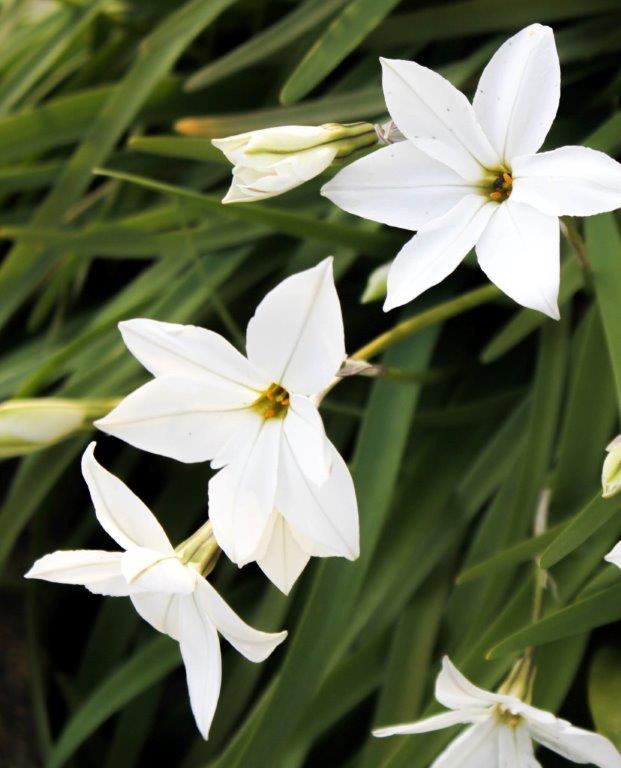April is an ideal time to lift and divide bamboos, grasses and clumps of herbs that have grown too large, this keeps them within their allotted space and maintains vigour. Divide them carefully by pushing two forks back to back into the centre of the clump then pushing the two handles together to prise them apart. Alternatively, use an old spade or saw, chopping the plant into several sections. Old material from the centre of the clump can be composted, the soil improved with grit and well-rotted compost and new divisions replanted or swapped with friends.
Don’t get caught out by sudden frosts that often happen in April, hoots, buds, blossom and newly planted potatoes and bedding plants are particularly vulnerable. Make a point of listening to the weather forecast and keep some newspaper, horticultural fleece, old net curtains or bubble wrap handy in case you need to rush out and cover them overnight at a moment’s notice.
It is also time to pollinate apricots and nectarines. If the weather is cold and the bees aren’t flying, pollinate them by hand, carefully transferring pollen from one flower to another, with an artist’s paintbrush.
Carrot fly has been quite a problem in my garden over the past few years. Thankfully, there are several effective ways of ensuring a decent crop and avoiding their predations. Cover crops with horticultural fleece from sowing to harvest, create a 60cm high barrier around the rows, mulch with a thick layer of lawn clippings, encourage rove beetles, a natural predator, into the garden by creating woodpiles and compost heaps and grow resistant varieties like ‘Legend’, ‘Sytan’ and ‘Flyaway’. Another option is to sow after mid May and harvest before mid August avoiding the main egg laying and hatching periods and sowing early and late season carrots in cold frames.
As the weather warms and the grass starts to grow it is time to give the lawn a boost with a weed, feed, and moss kill. I tend to be selective, spot treating weeds or removing them with an old knife as I quite like daisies.

Before mowing for the first time, make sure the ground is not waterlogged, lightly rake the lawn so the grass stands upright, and remove any moss once it has died, then set the mower at its highest cut, gradually reducing the height on ornamental lawns to 1.5inches (40mm) in spring and autumn and ½-1” (13-25mm) in summer. You should never remove more than 1/3 of the grass blade at any one time. Mow weekly in spring, twice a week in summer but only once a week in drought
Weed through alpine or bulb beds and top up the mulch, adding more grit and chippings – mulch in two sizes makes the bed look more natural. Make a note of the colour of grit you have used as top dressing, for future reference – light colours emphasise the white in Ipheion ‘Alberto Castillo’ shown here.


